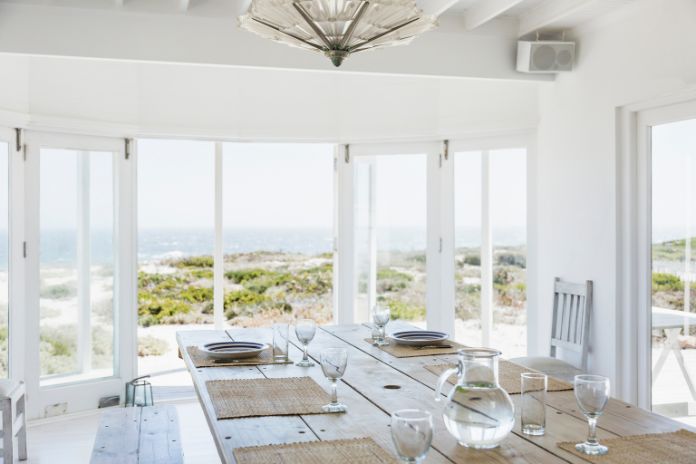
You can find some of the world’s best culinary experiences in the Caribbean. And with thoughtful interior design, you can dine in a Caribbean-inspired setting every day. Create a soothing, happy oasis with these tips for using a Caribbean style in the dining room.
Use Natural Materials
Use natural materials to evoke the Caribbean’s warmth, charm, and effortless beauty. Furniture made from real wood, such as teak or rosewood, has a classic look.
Rattan furniture and accessories have a handcrafted design that looks most at home in warm, tropical climates. Consider overhead rattan light fixtures if you don’t want to use woven dining chairs.
Sometimes, when every piece of furniture in a room is made from the same material, it can make the room feel uninspired or stuffy. You can mix and match your dining room chairs to create a more carefree look.
Embrace Vibrant Colors
Another tip for using a Caribbean style in the dining room is to embrace color. You can go bold and create a room awash with bright shades or use color more subtly. Rich color options are among the best ways to highlight the Caribbean aesthetic.
Use a designated color palette to guide your creative process. This palette will help you visualize which colors work best together. For example, you can create a coastal feeling by pairing creamy neutrals with jewel-toned shades of blue.
Decorate With Tropical Plants
Finally, plants add a vibrant spark to your dining room, making it more welcoming. You can decorate the room with real or well-designed faux tropical plants.
Growing tropical plants indoors can present a challenge since they prefer humid environments. Before deciding to keep a tropical plant in your home, learn about the plant’s care needs. Only use non-toxic plants in your home if you have children or pets.
Faux plants are easier to care for, and well-made faux plants can look just as beautiful as the real thing. Monstera is a popular houseplant that is loved for its heart-shaped leaves, and it’s native to the Caribbean. It can be challenging to grow this plant indoors, but you can find plenty of artificial options.































